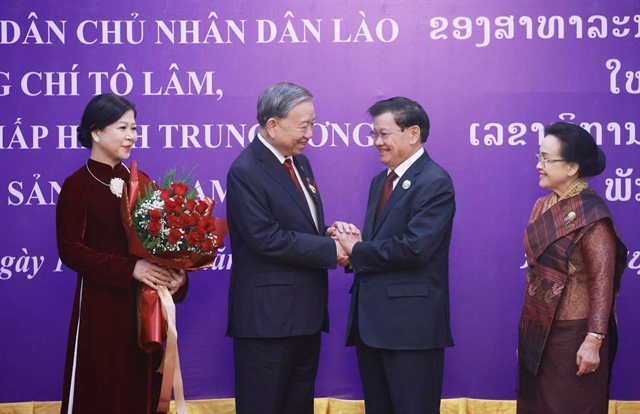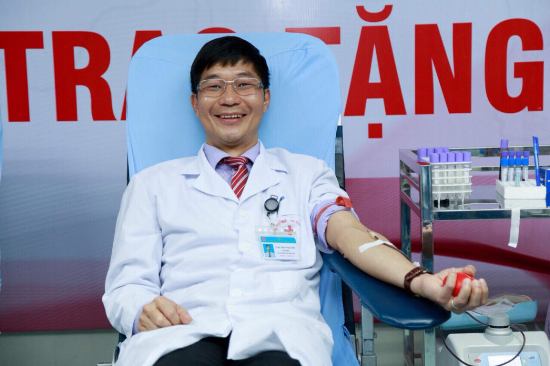 Opinion
Opinion


|
| Director of the National Institute of Haematology and Blood Transfusion’s National Blood Centre Trần Ngọc Quế. — VNA/VNS Photo |
Red Spring Festival, an annual blood donation campaign, has achieved remarkable results after 16 years as it has collected tens of thousands of blood units, overcoming the shortage of blood after the Lunar New Year. Director of the National Institute of Haematology and Blood Transfusion’s National Blood Centre Trần Ngọc Quế spoke with online newspaper Lao động thủ đô (Labour and Capital) about this issue.
Could you explain the reason the Red Spring Festival blood donation event, held by the National Institute of Haematology and Blood Transfusion and the Youth Association, always takes place after the Lunar New Year?
Blood donation campaigns have been held since 1993. Early on, most blood donors were students. In 2000, the institute collected a high amount of blood. However, there was still a shortage of blood every summer and during Lunar New Year in particular. These were the times when students had a long vacation and there was a bias that blood donation in early days of a new year would take away donors’ luck.
Therefore, since 2008, the institute has cooperated with the Hà Nội Blood Donation Youth Association to organise Red Spring Festival. This is an event to encourage people to participate in blood donation in the early days of the New Year, ensuring blood storage for treatment during the Lunar New Year and raise community awareness as well as change people’s perspective about voluntary blood donation.
In the very first year, the event attracted a large number of volunteers to participate in blood donation.
What are the results of Red Spring Festival after 16 years of operation?
Red Spring Festival has become an annual event and has achieved many positive results. The early spring blood donation campaign helps people change their awareness and willingness to participate in blood donation as they understand about the need for blood before and after Tết. We have received tens of thousands of blood units from the event.
The event has succeeded in inspiring other localities to promote voluntary blood donation. Since 2010, the National Steering Committee to mobilise voluntary blood donation has launched the event nationwide and received support from many cities and provinces.
Thanks to that, hospitals nationwide have solved the problem of blood shortage right after the Lunar New Year.
This year, the 16th Red Spring Festival took place in Hà Nội between February 6-12 at seven locations, welcoming 11,708 blood donors.
From February 1-5, the institute received more than 4,000 blood units from donors.
.jpeg)
|
| Blood donors at Red Spring Festival this year. VNA/VNS Photo |
Previously, blood donors were mainly students, so blood shortage often occurred every summer and during Tết holiday. How could Red Spring Festival help expand the type of blood donors?
It must be said that voluntary blood donation was initially a movement among students. In the 2000s, students accounted for 70-80 per cent of blood donors, but there was a lack of repeat donors.
That’s why we had to expand the type of blood donor so that blood donors no longer relied on regular events but became repeat and regular blood donors.
The World Health Organisation recommends that a country’s safe blood supply should based on voluntary, repeat and regular blood donors. Currently, students participating in blood donation only account for 20-25 per cent of donars while the rest are workers, officials, businessmen, and people from all walks of life.
In the past, 70-80 per cent of donors were people under 25 years old, but now this rate is the group of people aged between 25 and 40. Many people between 55-60 years old also participate in blood donation regularly.
Could you tell about the percentage of blood donors in our country in recent time? In the coming time, how will voluntary blood donation activities continue to be deployed to ensure blood supply?
Results in recent years nationwide showed that 97 per cent of blood donors are voluntary. The campaign to change public awareness about blood donation has achieved good results.
Along with improved health conditions and enhanced consciousness, individual blood donation volume has also increased from 250ml to 350-450ml. More than 80 per cent of blood donations of the National Institute of Haematology and Blood Transfusion were 350ml or more.
In the coming time, the institute will organise more blood donation drives outside of hospitals to expand a network of periodic blood donors. We will no longer call it a blood donation movement but a professional, regular, effective and sustainable activity to save and treat patients.
As WHO recommended, the average blood demand of a country is equal to 2 per cent of the population that donates blood. Currently, Việt Nam has about 100 million people, so we need about two million blood units. We have reached 1.5 - 1.6 per cent of the population donating blood each year. However, we sometimes have a shortage of blood in remote areas. Therefore, it is also necessary to maintain a reserve blood donation team in these areas.
The care of blood donors also needs to be focused on. We are promoting the development of plans and schedules to receive blood on a daily and hourly basis to receive blood based on demand. This way, the best quality blood products can be prepared in a timely manner. — VNS




